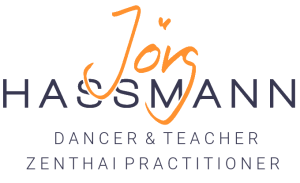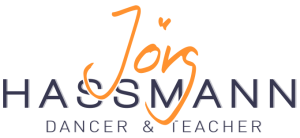Head & tale – Why not simply ‘spine’?
This text is part of my preparation for a Contact Workshop I taught in Marseille (January 25/26 2014). I wanted to focus on something that helps exploring the basics (spine) but that included something more specific and also challenging for my own teaching (head & tale).
I liked the idea to approach the familiar concept of our bony core structure by looking on its ends. Especially to bring more awareness to the tale, this forgotten, almost disappeared part of our body. Can we sense a difference if we think of articulating the pelvis versus articulating the tale? Maybe the tale is more of an image than a physical reality for movement. When I think of the pelvis I am inspired by the concept of its two halves, that create more articulation in this one bowl, and to have more vivid connections to the legs. The pelvis makes this remarkable shift from one spine (→ one sacrum) to two legs (→ left & right half). Christine Mauch once showed a drawing of a skeleton, where the legs where colored the same way as their connected halves of the pelvis. Suddenly the legs started at the pelvis and became much longer with an extra moveable part in it. And the spine also becomes more clear as one long flexible unit with many joints and movement options snaking up from tale to head and visa versa. A book that I use a lot to show the skeleton there is a part where separate untits of the skeleton are highlighted. It shows the spine starting with the lumbar vertebras. The sacrum though is part of the pelvis. The tale doesn’t belong to either spine or pelvis… Interesting…
So, what is it with about the tale? Why doesn’t the spine end with the sacrum? Will it be just another while for evolution to get completely rid of the tale? Or is there a real function in it – apart from making giving birth harder? I don’t know. I know that some people have more vertebras in their tale than others and that some people can actively move it. But I don’t know if I belong to those ones. What I noticed is that thinking of the pelvis is very different to thinking of the tale – in terms of the result of moving.
The tale extends the image of the spine beyond the pelvis – like a snake. The shape of a snake is pure extension. Somehow easy to imagine that both ends can curve and reach. Most vertebra animals have tales. Some monkeys can grab with is, a cat or a squirrel use it for balancing. A kangaroo uses it as a third leg. Most (or all?) vertebra animals have their main alignment of the spine horizontally. An organisation that adult human beings don’t use so often anymore. Our spine aligns vertically. The head balances on the top of it, the tale dangles down.
How special!
Somehow I like the idea of our tale as a luxury. Pelvis and sacrum are stuck in between spine and legs, negotiating this complex connection between top and bottom, one and two. In standing the sacrum carries the weight of the one spine and distributes the torso’s weight into the two legs. The tale though can just relax and hang out, dangle around. Maybe we can feed our spine with this freedom coming from its bottom end.
I find the tale very satisfying to ‘use’ in certain upside down / backspace situations, moments when the bottom is kind of exposed, like in shoulder rolls, or headstands with at least one leg, possibly both of them still hanging towards the floor. With the focus on the tale the whole spine becomes more alive while moving into the unknown of the space behind us. Instead of the big surface of the back that needs protection the tale invites multiple directions snaking up into the spine and the back can open up.
In 4-footer or pelvis lift positions the spine of the supported person is horizontally organized, like being an animal. Scooping, tilting and side bend movements are major tools to invite weight and to keep it moving. These options find more clarity and articulation when we initiate movements from the tale (or when we leave the tale consciously behind, while the head is leading). We could also use the sit-bones, I guess. But they are two and somehow more complex to visualize adequately. The tale is just one. That’s easier and more clear.
From a point of sensing movements I actually find ‘analing’ more clear – focussing on the anus instead of the tale. The anus is also just one, also an extension downwards and is has much more sensation and articulation. And it is well connected to the center. From a BMC background it makes a lot of sense to look for the tube in front of the spine, the digestive tract with mouth and anus at its ends. ‘Mouthing’ – initiating movements from the mouth is in our development the deeper pattern the following what the eyes see. Both – the visual and the taste sense give the strongest impulses for turning the whole body, they both connect the head very strongly to the centre, while keeping the neck free. But of course, working with the mouth is rather intimate and the anus is a complete tabu zone and not so easy to work with in a Contact Workshop. The tale is less captious and irritating. So I might stay with the tale then … at least teaching wise.
Thoughts after the workshop:
When I decided for that theme ‘head & tale’ I thought the base would be the material from our basic training program around soft and active spine, drawn from developmental movement patterns. Soft spine with a soft neck connected to an active center, the base for movements on floor level. And ‘active spine’ mainly in standing, the spine extending upwards against gravity. But because head and tale are bony structures they connect less clearly to the center and the very basic and essential movement patterns we establish in the floor work. With the focus on head and tale I felt I wasn’t able to get deep enough into the sensation and understanding of the body. The second day I changed the plan and made an excursion into center and fascia work, finding the juicy and elastic connections in the body and the touch. And as I hoped something in the learning process sank deeper. But I didn’t have enough time to properly reconnect to the material about head and tale and left with the feeling that mouthing and analing would have been the solution – if it wasn’t so delicate to approach it in such a short workshop. So I left with the a better understanding of what I wanted to do but without a clear solution how to do it…

